10 Best Vapi AI Alternatives I Tested & Reviewed in 2025
Meta: I tested the top Vapi AI alternatives in 2025 to find which platforms deliver the most reliable, low-latency voice agents for real customer calls.
___
After testing Vapi AI and the main alternatives across real voice-agent workloads, I found clear differences in latency, voice quality, and build effort. This guide focuses on the options that consistently performed well in practice.
Best Vapi Alternatives in 2025: TL;DR
Why Teams Look for Vapi Alternatives
Teams look for Vapi alternatives due to cost, latency, and performance issues, complex setup, and limitations in features like post-call automation and integrations.
Many users seek more affordable, reliable platforms with better performance, clearer pricing, robust integrations with other tools like CRMs, and simpler interfaces, especially for non-technical teams.
Common reasons teams move off Vapi include:
- Latency that stacks up under load: When the LLM, ASR, and TTS pipeline all get busy, small delays add up. Turn-taking feels slower, interruptions are harder to handle, and long calls start to feel less natural.
- Costs rising with high call volume: The bring-your-own-stack model means you pay separately for telephony, ASR, TTS, and model calls. As minutes and workflows grow, the combined bill can climb faster than expected.
- More wiring and maintenance work: Because you assemble the stack yourself, your team spends time connecting services, handling version changes, and debugging integrations whenever one provider behaves unexpectedly.
- Reliability dips on longer calls: Some teams see dropped turns, odd edge cases, or stalled flows during long conversations, especially when multiple actions or tools are involved in a single call.
- Limited visibility when debugging: With several vendors in the path, it is harder to trace where a failure originated or why a specific interaction went wrong, slowing root-cause analysis.
- Inconsistent barge-in behavior: In noisier environments or high-energy conversations, interruptions are not always handled cleanly, which hurts the overall perceived quality of the agent.
Together, these issues push many teams toward platforms that are faster to operate, easier to debug, and more complete out of the box.
How to Evaluate a Vapi Alternative
When you compare Vapi with other voice-agent platforms, all features aren’t equal. Some directly affect how well your agents perform in real workloads, while others matter only after the basics are solid.
These are the criteria that matter most:
Primary factors
1. Latency: Latency shapes how “real” a conversation feels. If round-trip responses slow down even slightly, interruptions get messy, agents talk over callers, and the overall experience breaks. Any alternative should show consistent, low-latency behavior across long calls and noisy inputs.
2. Architecture (built-in stack vs middleware): The stack you’re responsible for changes everything. Middleware platforms like Vapi require you to assemble and manage ASR, TTS, LLMs, and orchestration yourself. Platforms with more built-in components reduce the integration surface area and fail fewer times in production.
3. Reliability: Voice agents stress systems differently than text bots. Longer calls, barge-in handling, retries, and event timing quickly expose weak links. A strong alternative should stay stable across long sessions, handle interruptions cleanly, and avoid silent failures in event streams.
Secondary factors
4. Pricing transparency: Billing becomes unpredictable if voice, LLM, and audio costs are split across vendors. Clear per-minute or per-call pricing helps you model usage without surprises at scale.
5. Voice quality: Accent handling, emotion range, prosody, and clarity all shape user experience. Poor TTS or unstable audio quickly makes an agent feel synthetic or inconsistent.
6. Integrations: A platform that connects cleanly to CRMs, support tools, and internal APIs reduces development time, especially when your workflow requires data fetches during calls.
7. No-code vs developer-first: Some teams want a fast, visual setup. Others prefer API control. The right fit depends on how often you expect to modify flows and how much engineering involvement you want.
8. Support: When production calls fail, fast, competent support matters. Reliable alternatives offer clear debugging tools and responsive issue resolution.
Best Vapi Alternatives in 2025
1. Lindy: Best for teams that want a complete voice agent platform
What it is: Lindy is your AI employee for handling voice calls and workflows. Unlike Vapi, which makes you wire together multiple services, Lindy gives you a complete system where speech, reasoning, and actions all work together
Why it is a strong Vapi alternative: Lindy gives you a full stack that handles speech, reasoning, memory, and actions inside one system. Gaia, the phone agent, gives you fast responses, clean interruption handling, and real-time actions without the extra setup that Vapi requires.
Ideal for: Teams that want a voice agent that feels natural and completes tasks during the call.

We built Lindy so your agents run on a single tool instead of being spread across several vendors. Speech, reasoning, memory, and actions all live in the same environment, which keeps behavior consistent as you scale.
Gaia is the phone agent that brings this stack into real conversations. The first reply arrives quickly, and the call settles into a steady rhythm without long thinking pauses.
As callers speak, Gaia identifies what needs to happen and works in the background, whether that is pulling a CRM record, checking a calendar, or updating a ticket.
For example, when a customer calls about a delayed order, Gaia can check your CRM, pull tracking info from Shopify, and send an update email, all while keeping the conversation natural. If the caller interrupts to ask about returns, Gaia switches context immediately without losing the original task.
If the caller interrupts, Gaia adapts without losing track of the task it was handling. This keeps the interaction steady and avoids the awkward resets that happen when systems are glued together from separate ASR, TTS, and LLM tools.
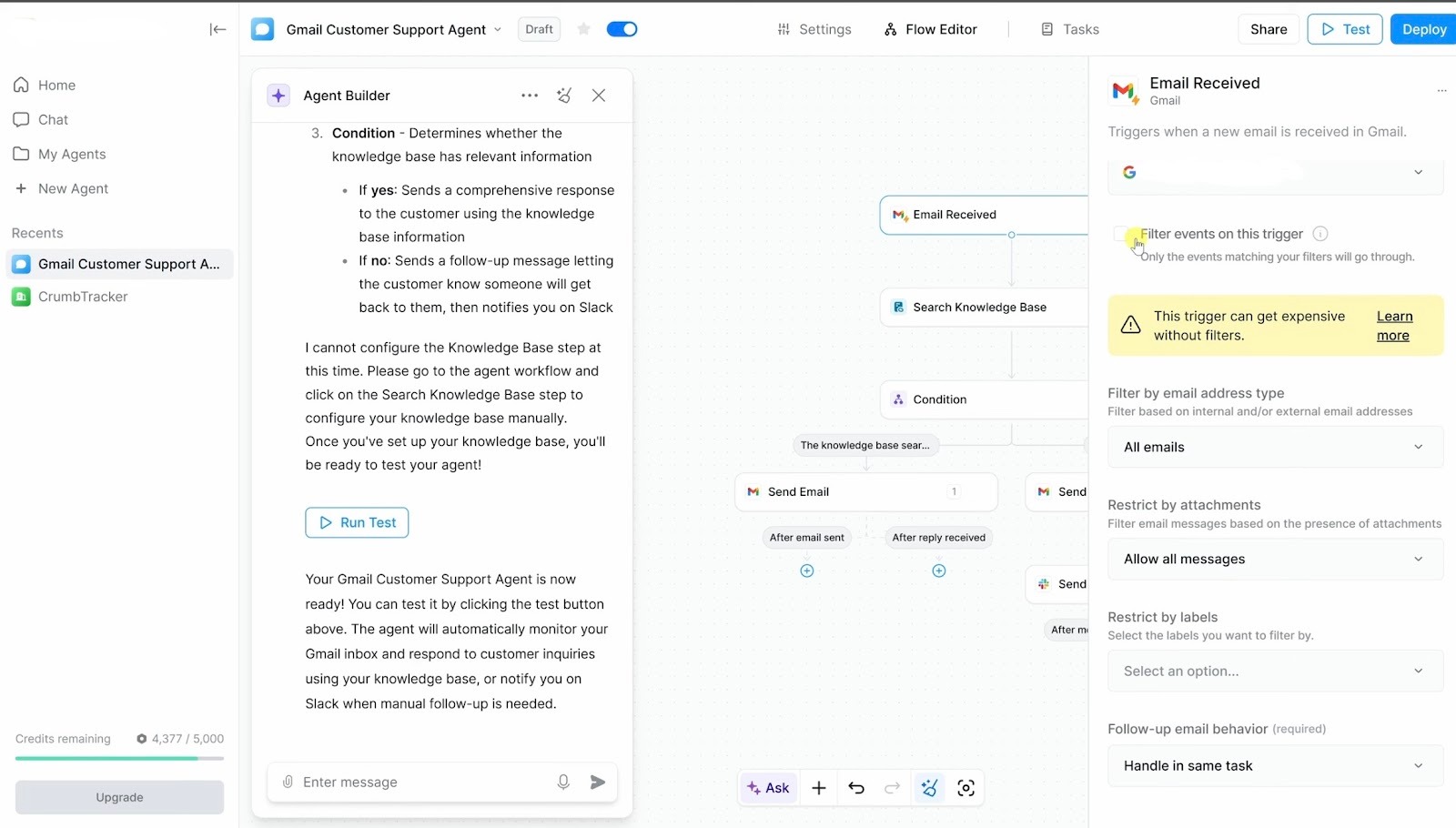
Because everything is built in, long calls remain stable, and adjustments are easy to make. You can refine an agent, connect new apps, or update instructions without turning it into an engineering project.
Lindy feels like a complete system rather than a collection of parts, which is why teams often choose it over Vapi when they want less overhead and smoother performance.
Pricing
You can start for free with 40 tasks and 400 credits. Paid plans start at $49.99/month.
{{templates}}
2. Synthflow: Best for teams that need stable, high-volume phone operations
What it is: Synthflow is an enterprise Voice AI platform built around its own telephony network and a structured deployment framework.
Why it’s a strong Vapi alternative: You get sub-100 millisecond audio routing and carrier-grade uptime from a network that Synthflow controls end to end. This removes many of the bottlenecks and call-handling inconsistencies that appear in multi-provider setups.
Ideal for: Organizations that run large scheduling, triage, or routing operations and want calls handled the same way every time.

Working with Synthflow feels like configuring a professional phone system that just happens to be driven by AI. Calls arrive with steady timing because the routing stays on Synthflow’s own network instead of hopping between carriers.
And that really matters when you are handling busy hours, long queues, or locations spread across regions.
You outline the steps of the call in the visual builder so the agent knows exactly how to move through each interaction. When that structure is set, Synthflow ties it to your calendars or CRMs, so the agent can complete tasks cleanly without drifting from your designed flow.
The BELL framework guides you from build to launch, with a test center that lets you simulate edge cases before the first real caller ever dials in.
Once live, auto-QA and monitoring review conversations in bulk so you can tighten prompts, adjust flows, or update logic based on real outcomes.
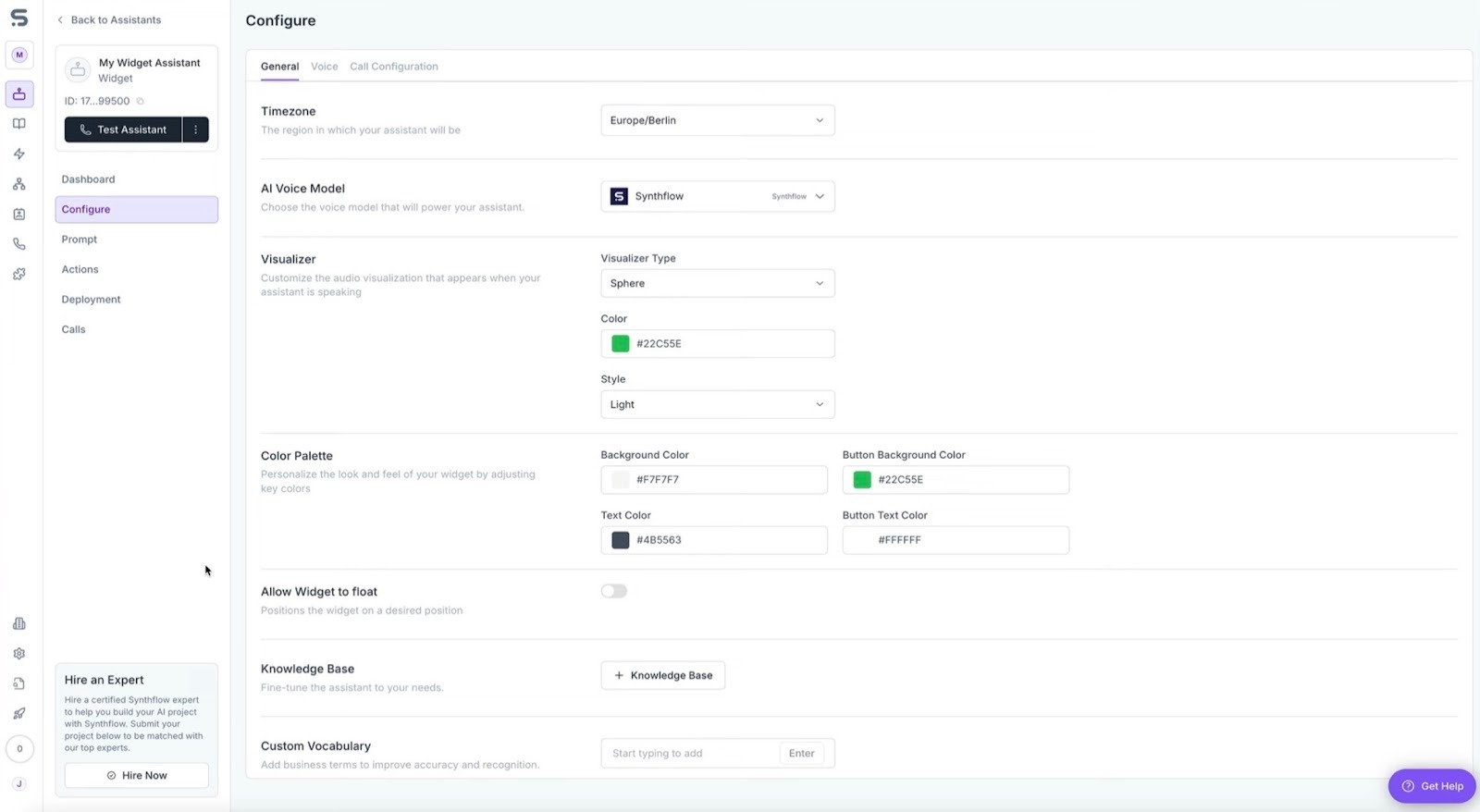
Synthflow stays dependable on high-volume and long-running calls, though the structured approach means conversations feel more procedural than free-form agents. For scheduling, triage, and routing in healthcare, real estate, or call centers, that consistency is usually a benefit rather than a limitation.
Pricing
Synthflow uses a usage-based enterprise pricing model tied to call volume and workflow complexity. The paid plans start at $375/month for 2,000 minutes, then $0.13/min.
3. Retell AI: Best for teams that want a phone agent that handles real-world call flows
What it is: Retell AI is a voice agent platform built to schedule appointments, navigate IVRs, and transfer calls with context.
Why it’s a strong Vapi alternative: You get a caller experience that feels closer to speaking with a trained receptionist. Retell can move through IVR menus, gather details, and route calls without you needing to build complex logic.
Ideal for: Healthcare, field services, real estate, and any team that relies on appointment-driven or multi-step phone interactions.
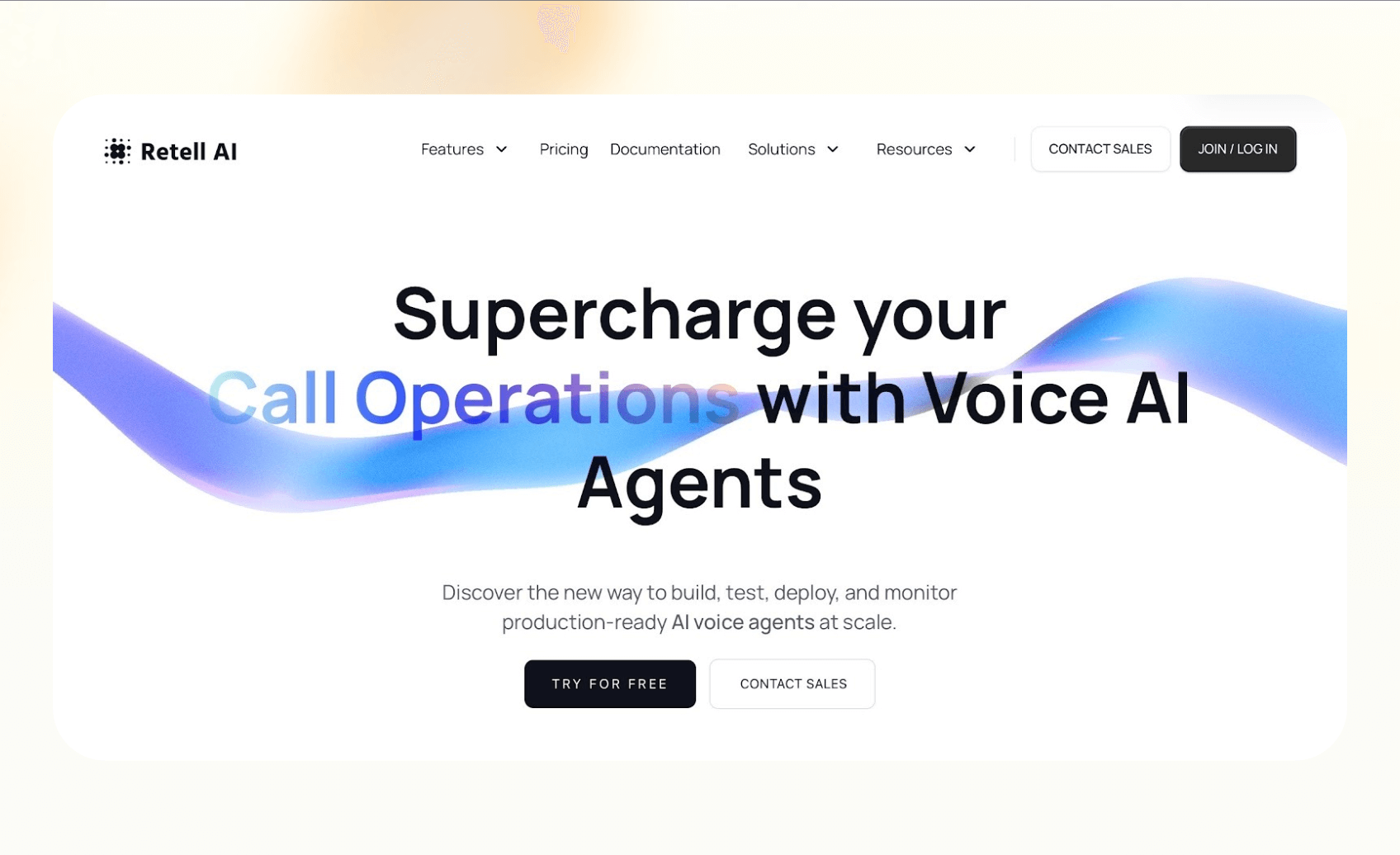
Retell AI fits best when your phone calls rarely follow a simple script. A typical flow might start with a patient calling a clinic to book an appointment. Retell can confirm who is calling and check the right calendar, then suggest a few time options and lock in the booking.
After that, it can move into reminders or intake questions without losing the thread of the conversation.
It also handles the parts most agents ignore. If your line sits behind an automated menu, Retell can work through the IVR, press the correct keys, and reach the right department before resuming the call.
If a human needs to step in, Retell hands over a clear summary of the information it has already gathered, including the caller’s details and any scheduling or menu navigation completed. The human agent can continue the call without making the caller repeat anything.
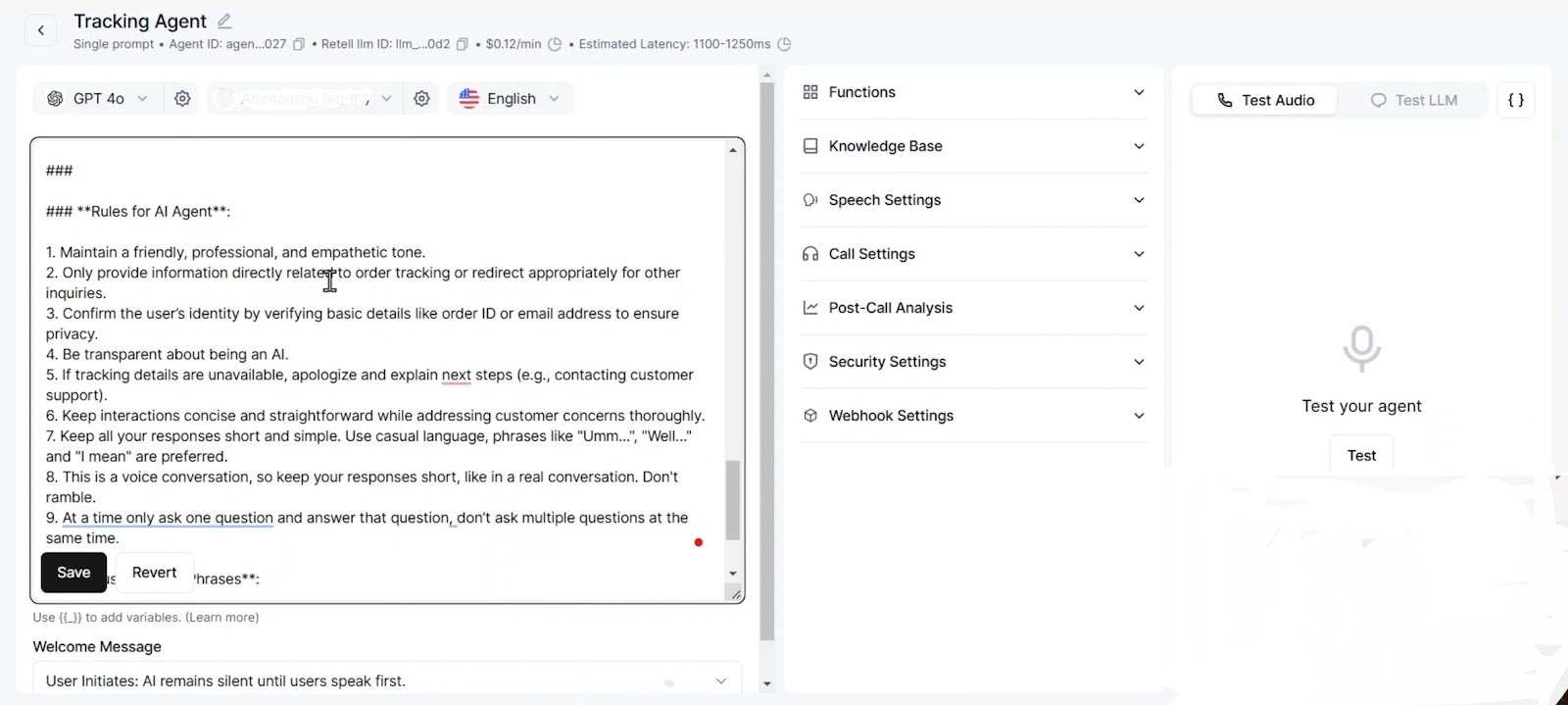
It holds up well at higher volumes and across different phone providers. The downside is that very specific edge cases sometimes need extra prompt tuning so the agent behaves exactly the way your team expects.
Pricing
Retell operates on a pay-as-you-go model with no platform fees.
4. Bland AI: Best for teams that want full control over their voice stack
What it is: Bland AI is a developer-first platform that lets you run voice agents on your own dedicated models, servers, and GPUs with complete control from end to end.
Why it’s a strong Vapi alternative: You can build a fully self-hosted voice stack that uses your recordings, your tuning, and your infrastructure instead of relying on third-party models.
Ideal for: Enterprises that need custom voices, strict data control, and deeply tailored conversational behavior.

With Bland, the starting point is ownership. You train models on your own recordings, so the agent reflects your brand voice instead of a generic AI actor.
You can shape tone, pacing, and emotion, then use conversational pathways to decide how each step should unfold for different scenarios or compliance needs.
These controls help agents stay on script, avoid hallucinations, and follow the exact rules you set.
A bank, for example, can lock down how account disclosures are read, while a healthcare provider can enforce specific phrasing around consent and privacy.
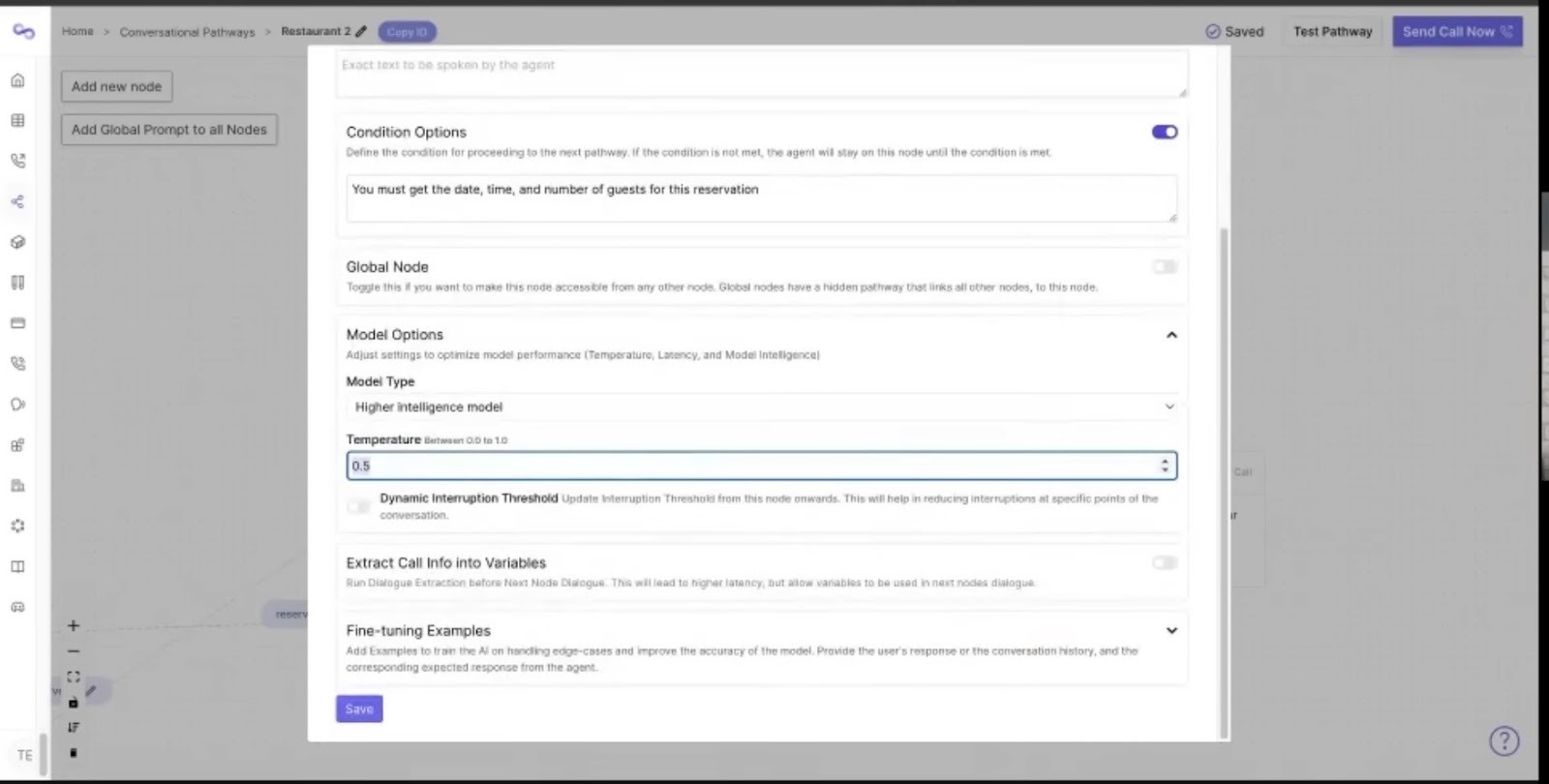
Since the full pipeline runs on dedicated infrastructure, calls move quickly and stay consistent even when volumes spike. The analytics dashboard adds clarity by showing recordings, sentiment trends, and outcome patterns across different campaigns.
Bland gives you direct control over how the agent works. Every part of the system reflects the choices your team makes, from the voice model to the guardrails to the way each step of the conversation is shaped.
That level of control is the defining strength, but it also means Bland fits naturally in teams that already prefer to design and manage their own conversational systems rather than rely on preset templates.
Pricing
Bland pricing is based on usage. It starts at $0.09 per minute for connected calls and $0.015 for outbound attempts under 10 seconds.
5. Vocode: Best for developers who want an open-source voice stack
What it is: Vocode is an open-source framework for building voice agents with your own models, routing, and logic.
Why it’s a strong Vapi alternative: You get complete flexibility to choose your ASR, TTS, LLM, call flow, and hosting setup. This makes it suitable for teams that want to engineer their own voice agent rather than rely on a predefined system.
Ideal for: Engineering teams that prefer an open-source toolchain and need custom routing or deep model control.
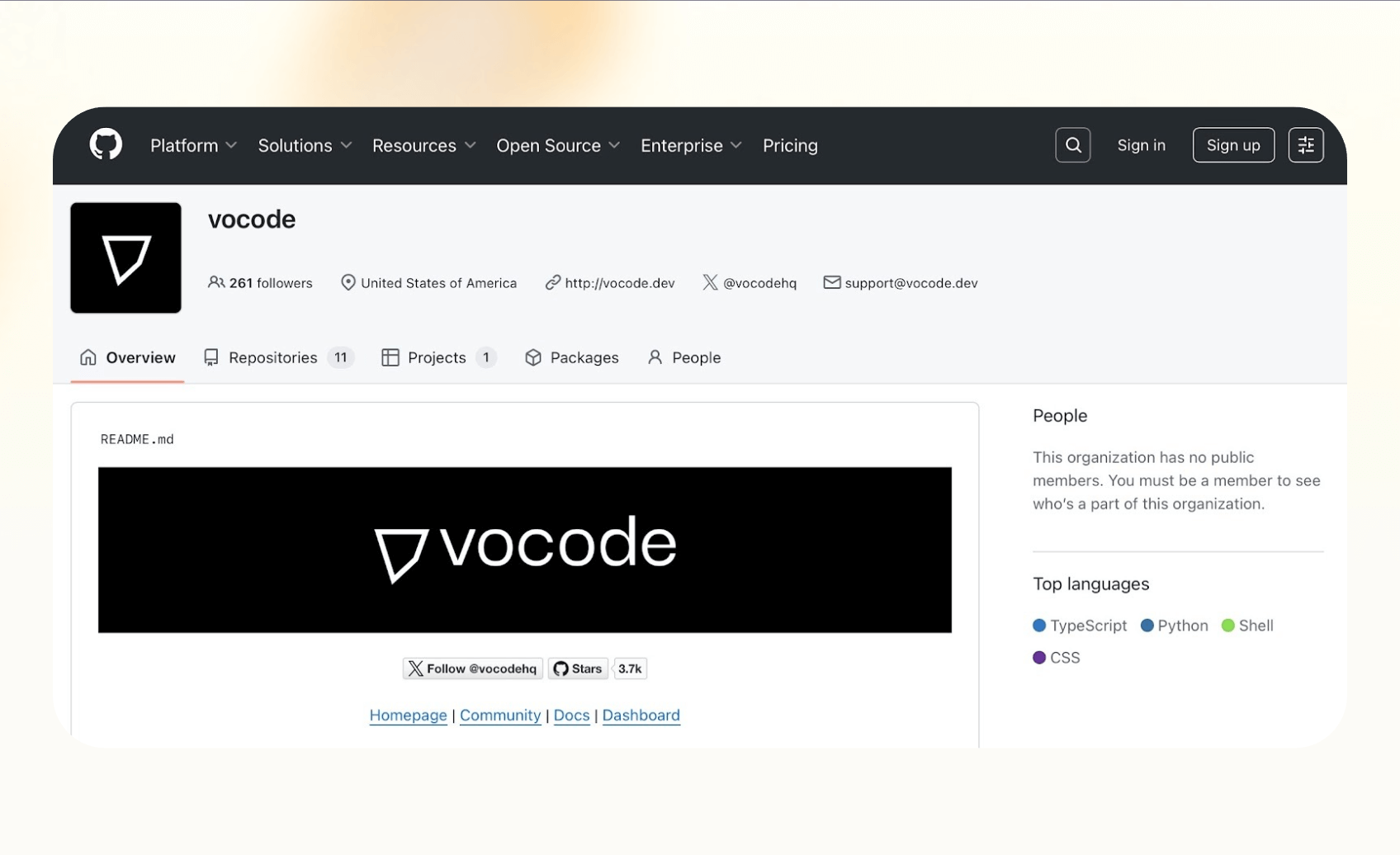
In Vocode, you build the voice agent directly in your own codebase rather than configure it through a preset interface. You start from the open-source core, choose your ASR, TTS, and LLM components, and wire them together through the Python or Node SDK to create a custom pipeline.
This structure makes it easier to control streaming behavior, adjust routing, or test different model combinations without being limited to a vendor’s defaults.
If you prefer engineering autonomy, Vocode feels reliable because every part of the agent is transparent, inspectable, and modifiable.
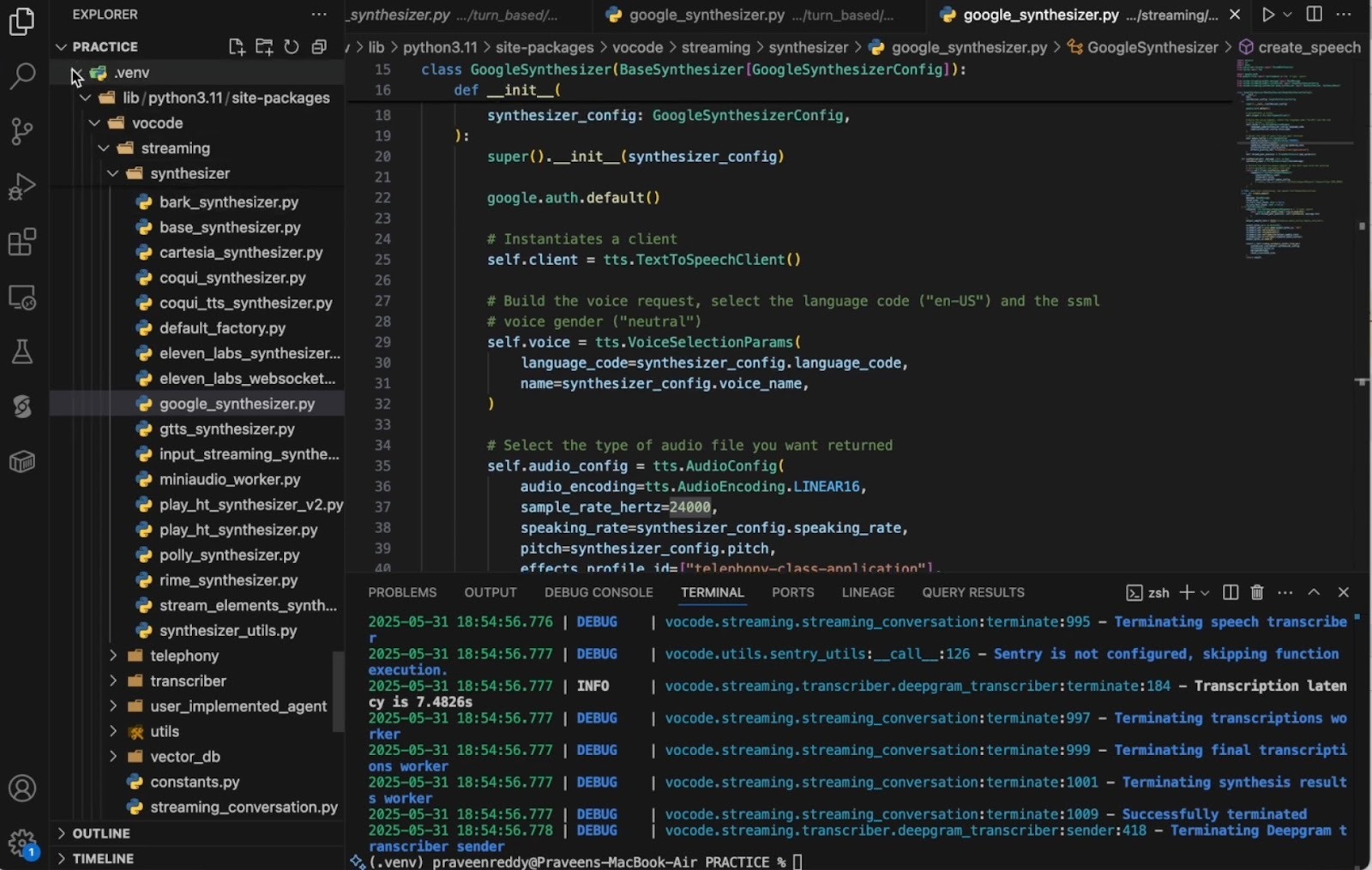
The open-source core also helps with debugging, because you can trace exactly where timing issues or logic gaps appear. For teams with strong engineering capacity, that level of visibility is a clear advantage.
But Vocode requires more consideration in the setup. You need to handle telephony, tune latency, and manage reliability on your own, which can take time if you’re running production workloads.
It’s a better fit when you want full control and room to experiment, rather than a system that gives you a ready-made flow from day one.
Pricing
Open-source framework; hosting and infrastructure costs depend on your setup.
6. Air.ai: Best for teams that want long, human-like outbound conversations
What it is: Air.ai is a voice platform built to run long customer conversations that sound like a skilled human rep rather than a short task-based agent.
Why it’s a strong Vapi alternative: It focuses on extended, natural dialogue. Air.ai can stay on a call for ten, twenty, or even forty minutes while keeping track of details and following the right steps to move the conversation forward.
Ideal for: Outbound sales, qualification calls, and follow-up campaigns where persistence and natural pacing matter.
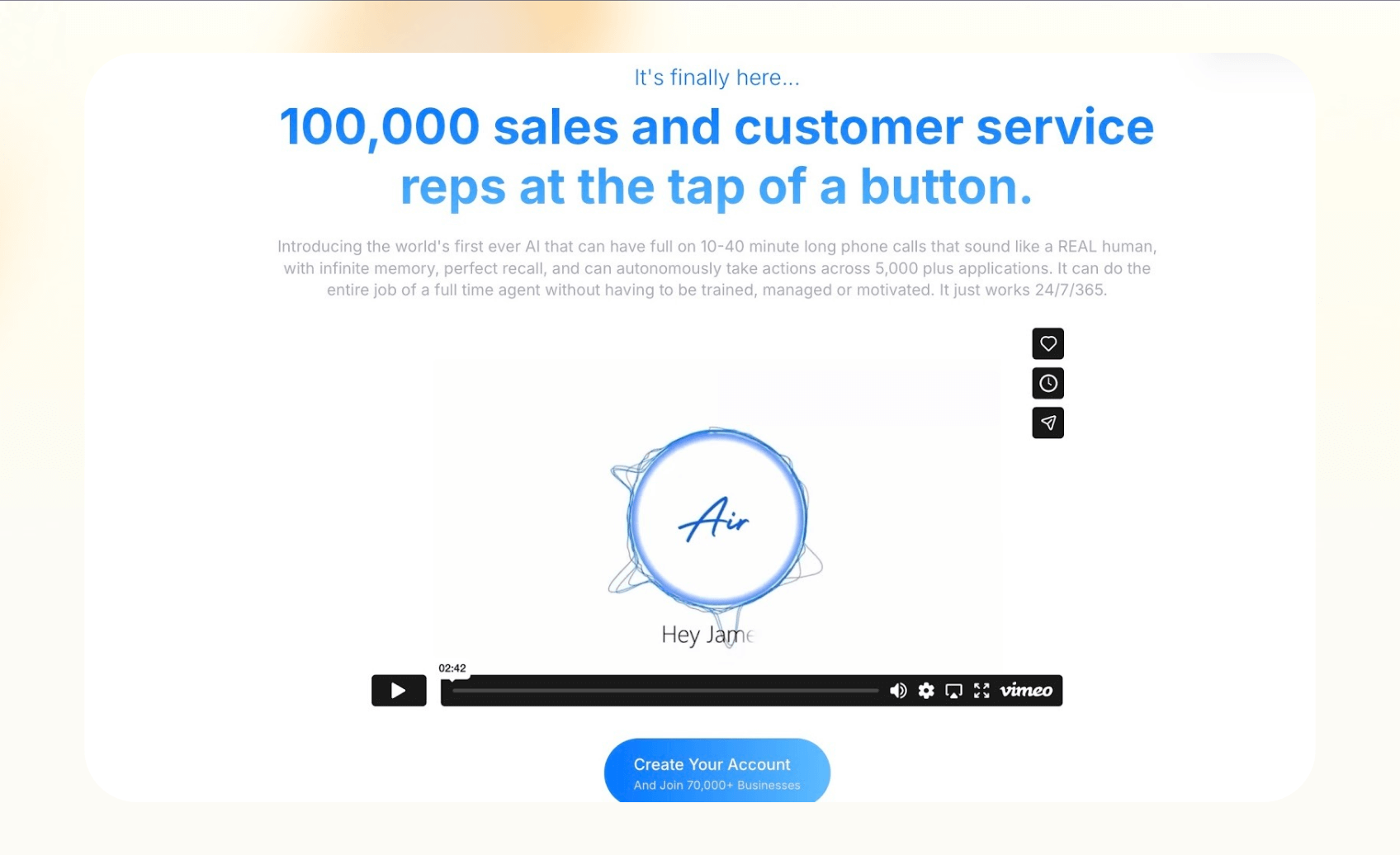
Air.ai performs well in outbound scenarios where the goal is to hold attention, guide the caller through a series of questions, and keep the conversation moving without sounding mechanical.
A sales team, for example, can use it to call leads who downloaded a whitepaper. The agent can open the call in a steady, human-like tone and ask simple discovery questions without sounding rushed.
It also brings up earlier details at the right moments so the conversation feels more deliberate and less like a sequence of scripted prompts.
Air.ai also handles follow-through during the conversation. It can confirm email addresses, send a summary, trigger a CRM update, or schedule a follow-up step without disrupting the flow.
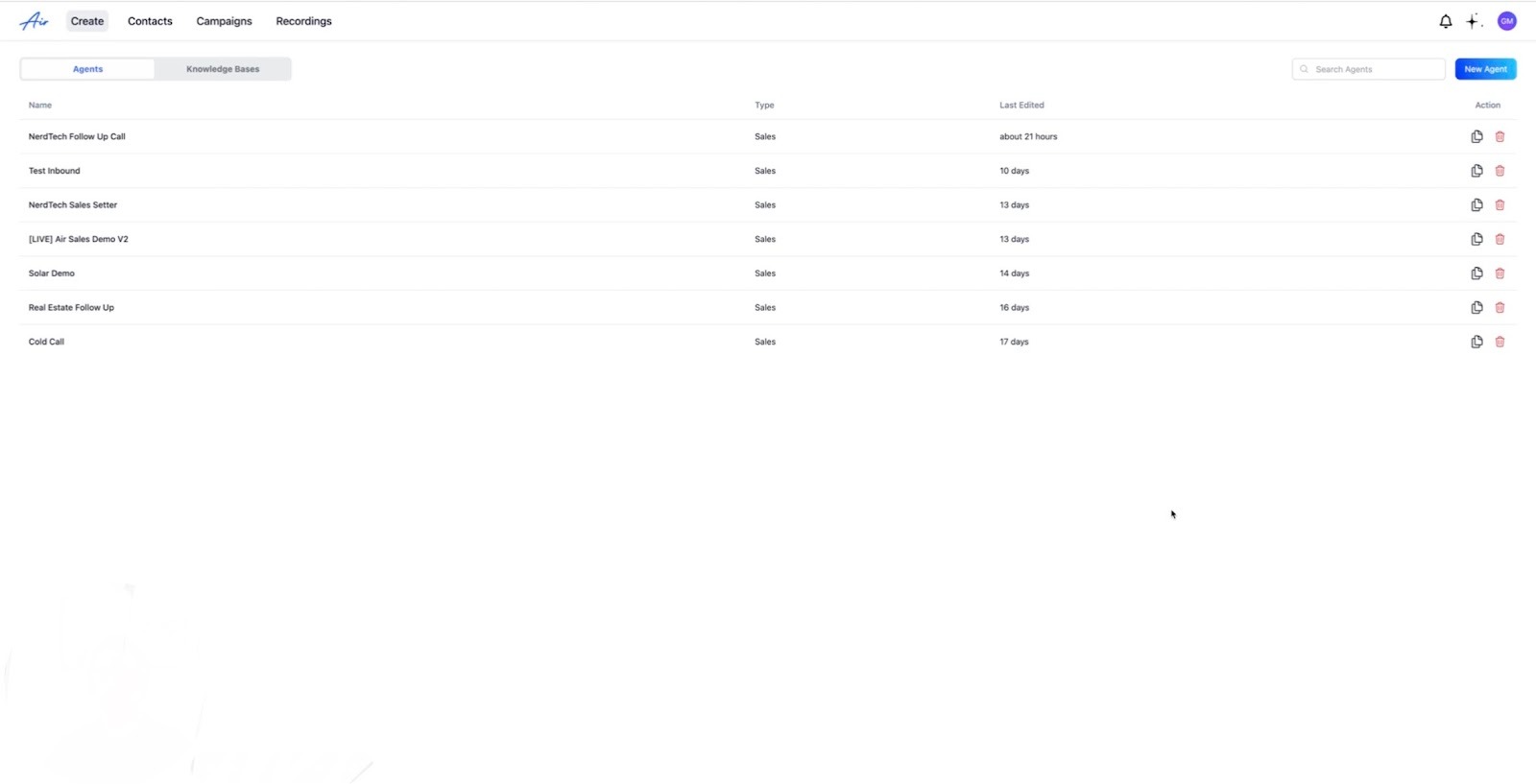
This pacing makes it effective for qualification calls, longer nurturing sequences, or situations where you need a clear picture before handing the conversation off to a human.
The practical limitation comes from the telephony side. You have to supply your own Twilio account, and outbound minutes can increase costs as campaigns grow.
If natural, sustained dialogue is your priority, Air.ai handles those calls with a depth most systems don’t match.
Pricing
Usage-based pricing with separate telephony costs.
7. Goodcall: Best for small businesses that want a simple AI receptionist
What it is: Goodcall is a no-code voice agent that answers customer calls, books appointments, and handles common questions without requiring technical setup.
Why it’s a strong Vapi alternative: You can launch a working phone agent in minutes. Goodcall focuses on handling everyday customer calls rather than building complex conversational systems.
Ideal for: Local businesses, service providers, and small teams that want reliable call coverage and quick appointment handling.
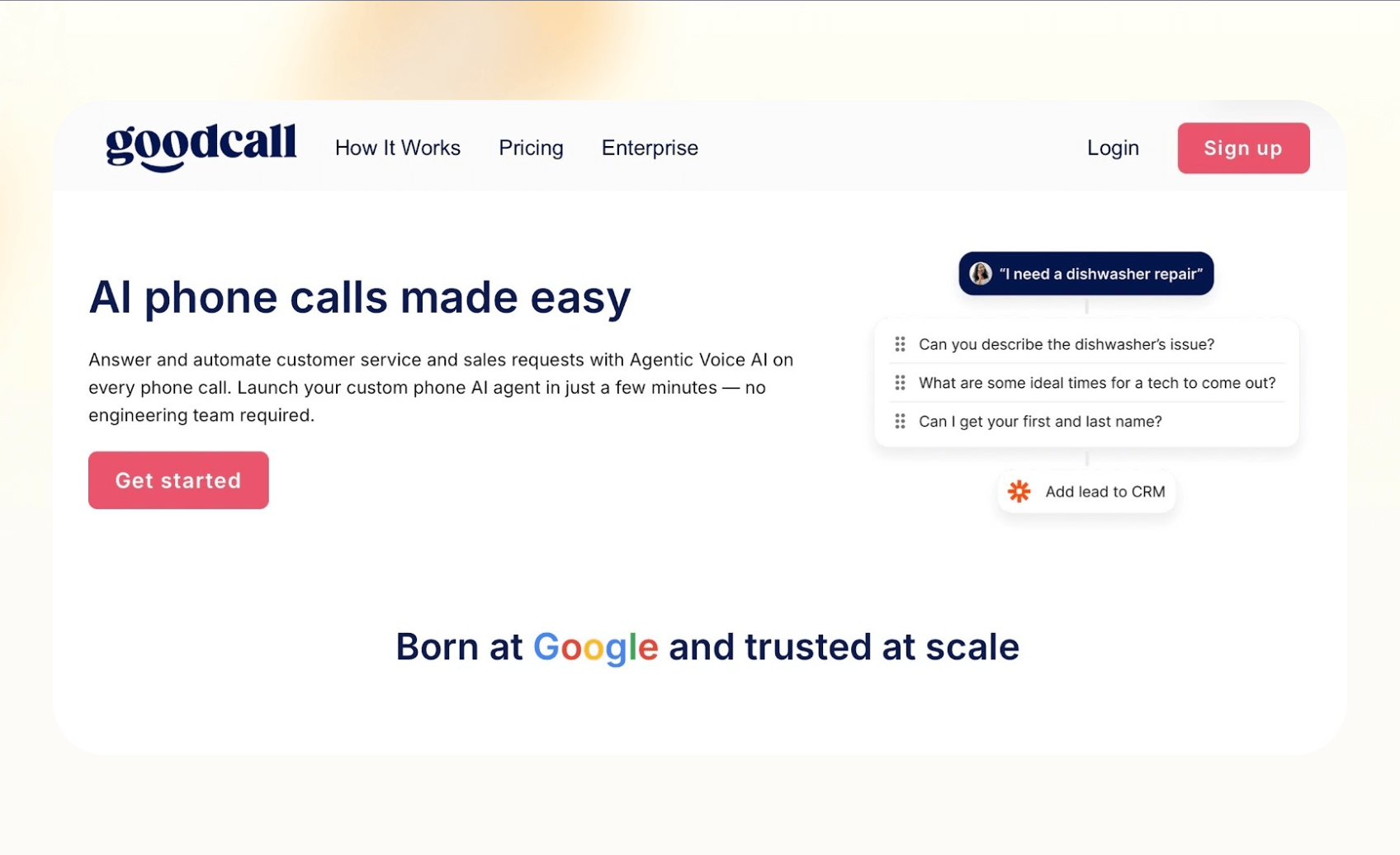
Goodcall is designed for everyday situations where callers want quick answers and an easy way to book time or leave details. To set up, you link a Google listing, website, or calendar, and the agent immediately starts handling routine requests without technical configuration.
From there, it manages questions, checks availability, shares updates through your CRM or email tools, and hands the call to your team when a human needs to step in.
Once it has the right information, the agent can recognize returning customers, greet them appropriately, and route them to the person they usually work with. This keeps routine calls feeling familiar without adding configuration work for your team.
You also get clear analytics showing which calls were automated and which ones required help from a human. This gives small teams a sense of how much load the agent is absorbing.
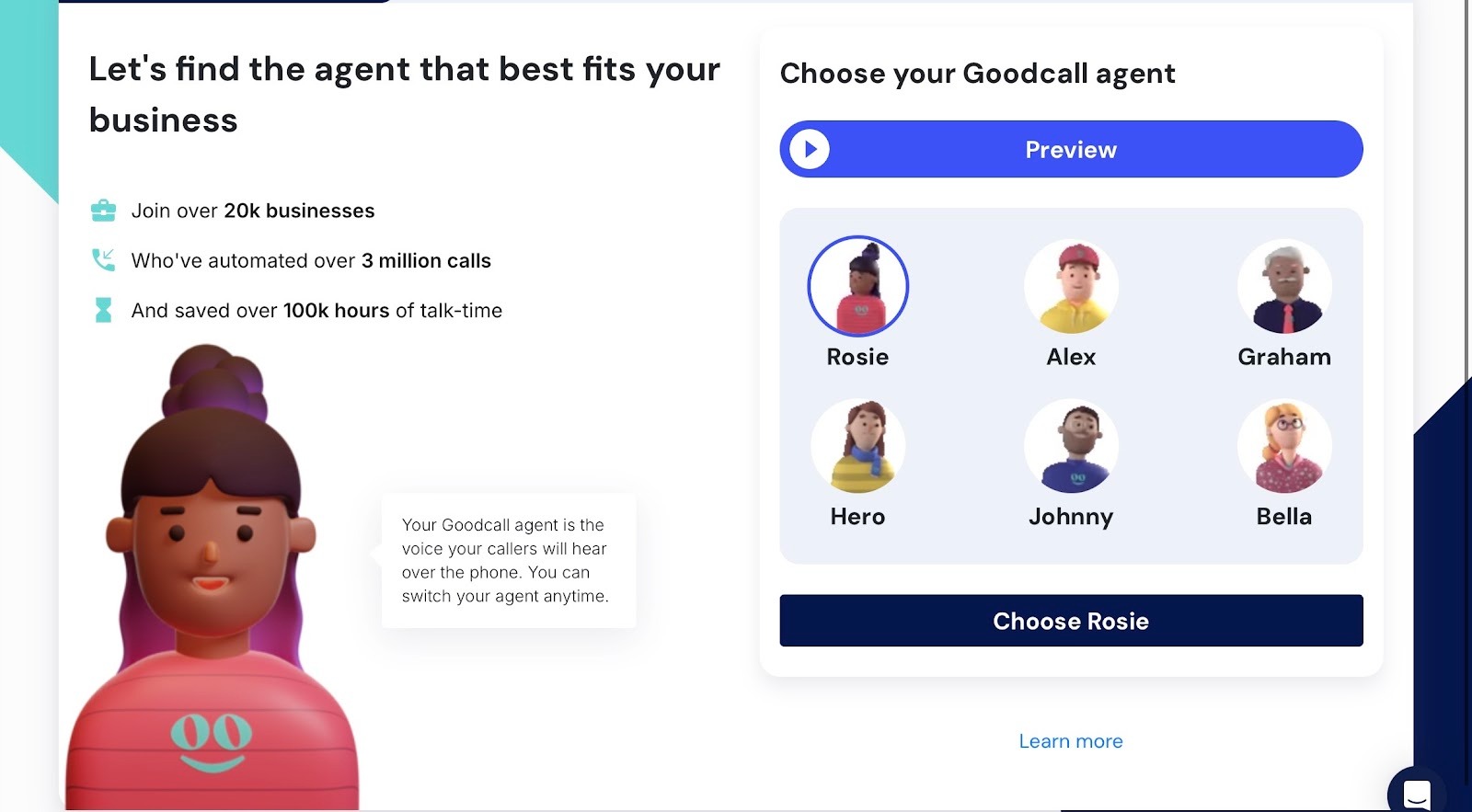
Because the workflow stays simple, the experience remains consistent. In my opinion, Goodcall isn’t built for deeper branching or multi-step decision logic, so teams with more complex call flows may reach its limits quickly. But for simple reception and scheduling tasks, it stays reliable without creating extra work.
Pricing
Paid plans start at $79/agent/month with unlimited minutes. Growth is $129/agent/month, and Scale is $249/agent/month.
8. Cartesia: Best for lifelike voice and instant speech reactions
What it is: Cartesia offers Sonic and Ink, two speech models built for developers who want expressive voices and fast transcription for real-time agents.
Why it’s a strong Vapi alternative: Sonic gives you clear, natural speech with low time to first audio, and Ink provides fast streaming transcription that supports responsive interactions.
Ideal for: Teams that prefer building custom voice agents and need high-quality sound, speed, and multilingual support.

With Cartesia, the conversation starts smoothly and keeps its rhythm throughout the call. Sonic handles emotional cues, varied pacing, and natural inflection, which helps your agent sound steady and expressive rather than mechanical.
You can set up specific voices, clone a voice in seconds, or choose from different personas when you want a consistent brand style. The multilingual range is broad, and the pronunciation accuracy makes it easier to build agents that serve callers across different regions.
Ink complements this by producing fast and accurate transcription, even when callers speak quickly or in noisy environments, so your agent can reason and take action without hesitation.
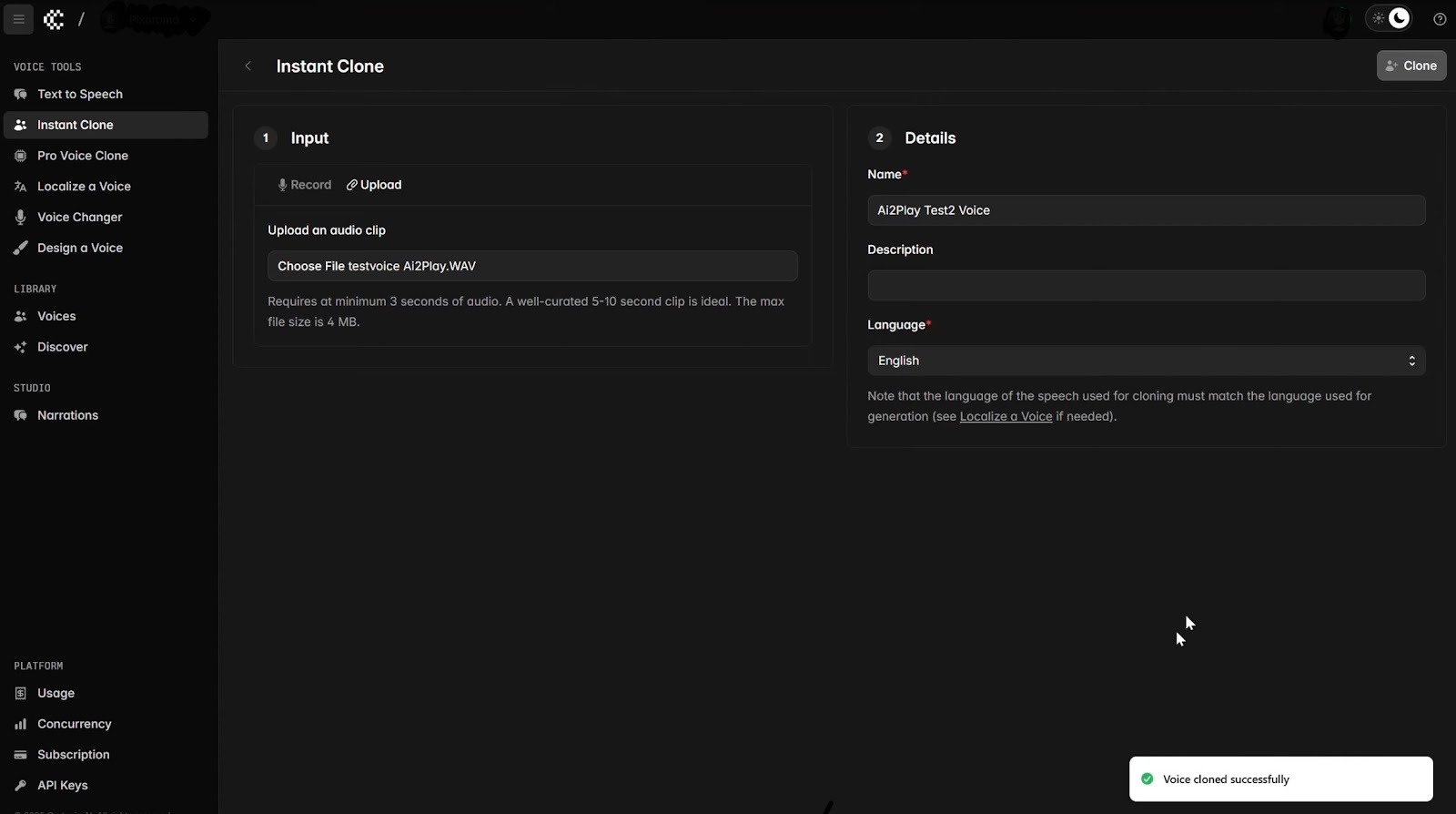
Each change can be tested instantly on a real call, and the evaluation tools highlight where responses need refinement.
This setup offers flexibility, although it does require engineering familiarity. If your team is comfortable with code, it will find the system powerful, while non-technical users may prefer simpler platforms.
Pricing
There is a free plan that includes limited credits. Paid plans start at $5/month.
9. ElevenLabs: Best for teams that want a complete audio AI ecosystem
What it is: ElevenLabs allows you to create voices, edit media, and deploy agents within the same environment.
Why it’s a strong Vapi alternative: You get high-quality voice generation, fast synthesis, multilingual support, and agent behavior grounded in your own data through Retrieval-Augmented Generation.
Ideal for: Teams building voice-driven applications, producing media content, or creating agents with specific brand voices and integrated workflows.
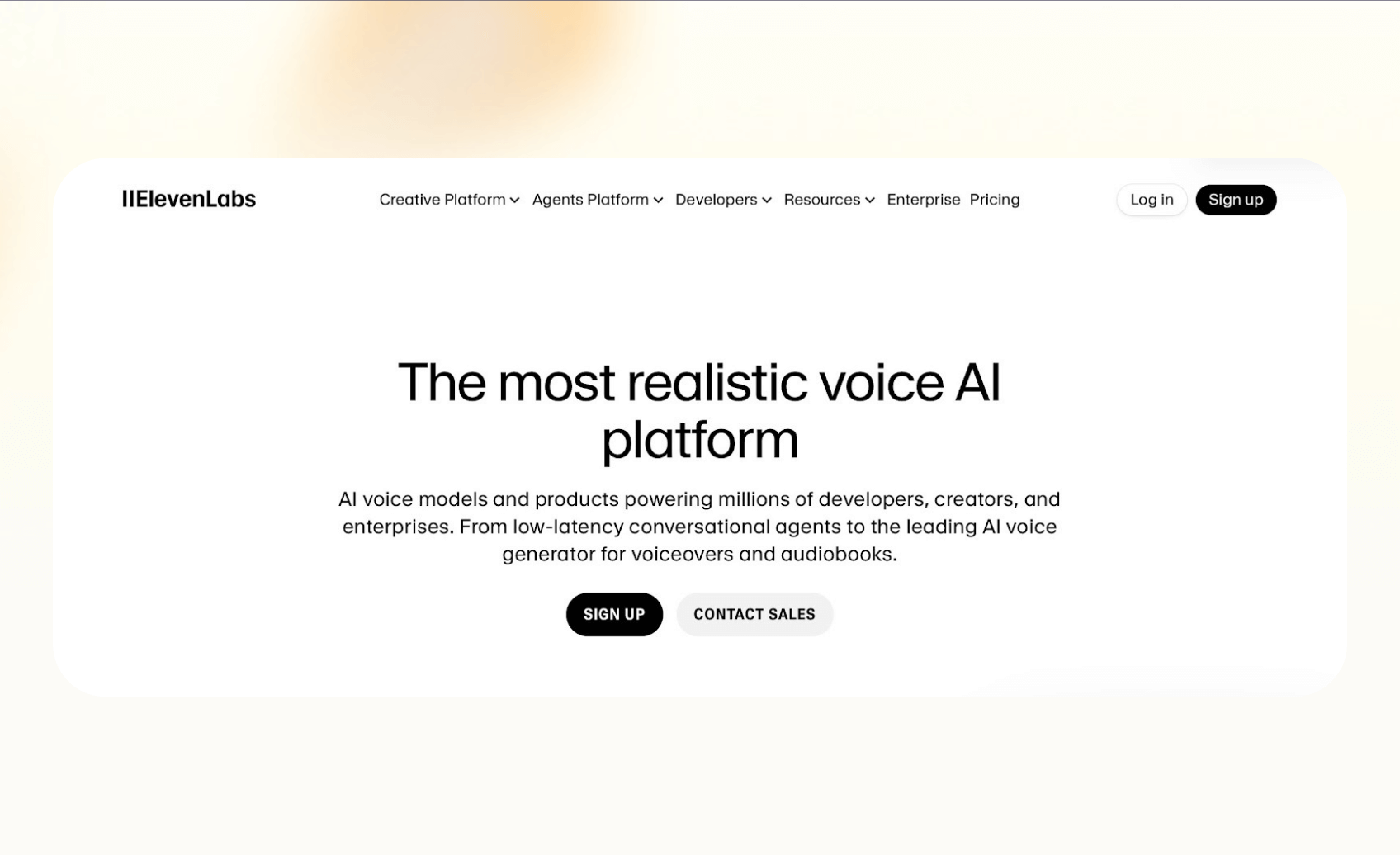
ElevenLabs approaches voice work from the creative side first. You begin by shaping how the voice should sound: clear, energetic, calm, or conversational, so the agent already feels intentional before you ever design its behavior.
Once that foundation is set, conversations flow with steady timing and expressive delivery, which helps the agent hold longer or more nuanced interactions without sounding flat.
Because the agent can reference your material directly, it handles specific questions in a way that reflects your own wording and style. This makes it useful when you want answers across support, sales, or product education to match the language your team already uses.
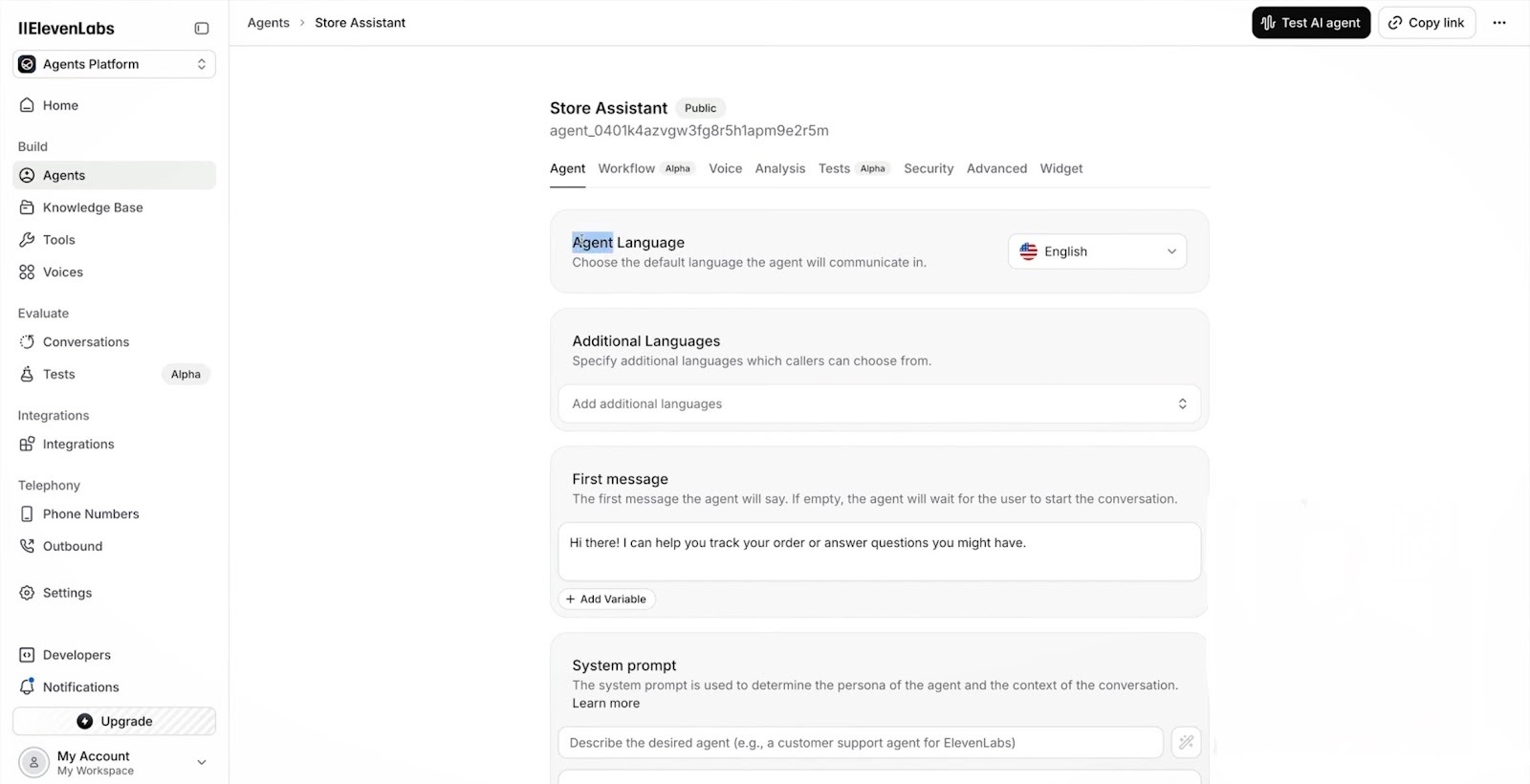
Studio 3.0 then gives you an easy way to keep everything consistent. If you’re building product walkthroughs, quick support clips, or internal training audio, you can revise lines, tighten pacing, or clean up recordings without re-recording anything.
I think the system feels a bit heavier if you only need a simple phone agent. But teams working across media and conversational projects will benefit from having everything in one place.
Pricing
A free plan is available. Paid plans start at $5/month.
10. Deepgram: Best for teams that need a low-latency engine for real-time voice agents
What it is: Deepgram combines speech recognition, text-to-speech, and LLM orchestration into one pipeline.
Why it’s a strong Vapi alternative: You get real-time transcription, natural voice synthesis, and built-in context handling from the same API, which lowers latency and simplifies your architecture.
Ideal for: Teams building custom voice agents, contact center solutions, or speech-heavy applications that depend on accurate recognition and quick turnarounds.

Deepgram works well when your agent needs to follow a caller’s words as they happen. If a customer calls about a billing issue and explains it in a scattered way, the system can capture each shift clearly. They might pause, correct themselves, jump back, or add details out of order.
Deepgram processes those changes quickly, so the agent responds at the right moment instead of waiting for a full scripted turn.
Once the conversation settles, the responses arrive at a steady pace. This helps the agent keep the call moving without sounding slow or distracted. You choose the reasoning model, and Deepgram handles the speech layer, so the audio side stays consistent while your logic determines what should happen next.
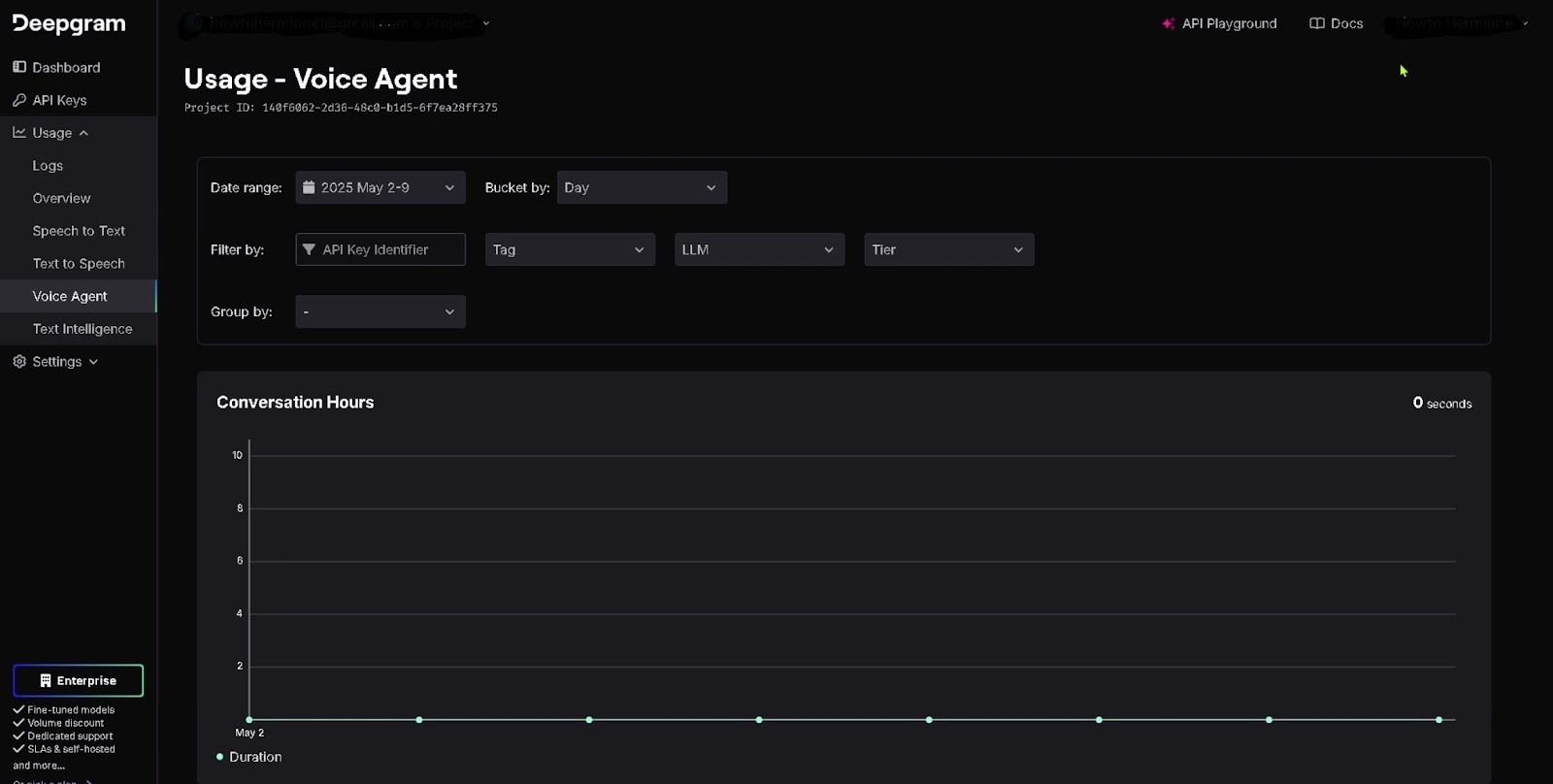
It fits well in contact centers, healthcare workflows, or tools that depend on accurate transcription and quick turnarounds. Teams that want a packaged drag-and-drop interface may find it more hands-on than expected, but developers who prefer shaping the pipeline themselves usually appreciate the control.
Pricing
There is a free plan. Paid plans start at $4K+/year.
Lindy vs. Vapi: Key Differences
Lindy and Vapi take very different approaches to building voice agents. Vapi focuses on giving you a flexible layer you can wire to your own ASR, LLMs, telephony, and tools.
Lindy offers a unified environment where reasoning, actions, and integrations run inside the same workspace. This creates two distinct workflows for teams evaluating voice automation.
Latency
Vapi provides fast responses for short and mid-length calls, but its speed depends on the models, telephony provider, and routing you choose. Lindy maintains steady, real-time reactions across longer workflows because reasoning, actions, and integrations happen inside one system. This reduces delays when the agent needs to complete several steps in sequence.
Architecture
Vapi operates as an orchestration layer. You assemble ASR, LLMs, TTS, telephony, and tool integrations yourself. Lindy comes with built-in memory, tools, and multi-step actions. Teams that want consistent behavior across many workflows tend to prefer Lindy’s environment, while teams that prefer to compose each component may gravitate toward Vapi.
Pricing
Vapi charges by the minute and requires separate spending on model calls, telephony, and any external services. Lindy uses a credit-based system that covers calls, tasks, and actions within the platform. The difference comes from how much of the workflow each tool handles internally.
Voice Quality
Vapi lets you connect to any TTS provider, so quality varies depending on the engine you attach. Lindy includes its own voice capabilities and supports external TTS when needed, which keeps delivery consistent without complex routing between vendors.
Integrations
Vapi integrates mainly through APIs and webhooks and depends on manual setup to connect other systems. Lindy includes native integrations for CRMs, calendars, ticketing tools, and operational apps, allowing multi-step actions to run inside the software without building custom wiring.
Reliability
Vapi’s reliability is tied to the individual services you assemble, which can introduce more moving parts. Lindy manages reasoning, actions, and memory internally, so errors are easier to trace and less likely to come from mismatched services. This stability is helpful for long workflows and high-volume use.
Final Thoughts
The best Vapi AI alternative depends on what you expect from a voice agent platform. If you want the lowest latency, the most stable reasoning, and the least complexity, Lindy is the strongest option because it integrates speech, memory, actions, and governance in one system.
Other platforms can work well for niche needs, such as deep telephony control, open-source experimentation, or high-volume outbound calling, but they require more stitching, more monitoring, or more manual guardrails.
If your goal is to run voice agents that handle long calls, complete real tasks, stay grounded in your data, and remain predictable at scale, Lindy gives you the most dependable foundation to build on.
{{cta}}
Try Lindy: An AI assistant that handles support, outreach, and automation
Lindy uses conversational AI that handles not just chat, but also lead gen, meeting notes, and customer support. It handles requests instantly and adapts to user intent with accurate replies.
Here's how Lindy goes the extra mile:
- Fast replies in your support inbox: Lindy answers customer queries in seconds, reducing wait times and missed messages.
- 24/7 agent availability for async teams: You can set Lindy agents to run 24/7 for round-the-clock support, perfect for async workflows or round-the-clock coverage.
- Support in 30+ languages: Lindy’s phone agents support over 30 languages, letting your team handle calls in new regions.
- Add Lindy to your site: Add Lindy to your site with a simple code snippet, instantly helping visitors get answers without leaving your site.
- Integrates with your tools: Lindy integrates with tools like Stripe and Intercom, helping you connect your workflows without extra setup.
- Handles high-volume requests without slowdown: Lindy handles any volume of requests and even teams up with other instances to tackle the most demanding scenarios.
- Lindy does more than chat: There’s a huge variety of Lindy automations, from content creation to coding. Check out the full Lindy templates list.
Try Lindy free and automate your first 40 tasks today.
FAQs
1. What is the best alternative to Vapi AI?
Lindy is the best alternative to Vapi AI because it unifies speech, reasoning, memory, and actions in one system instead of relying on multiple external services. That structure keeps calls stable, reduces latency problems, and supports long, multi-step workflows without the inconsistencies that appear in stitched-together pipelines.
2. Which Vapi competitor has the lowest latency?
The Vapi competitor with the lowest latency is Lindy, as Lindy runs its ASR, TTS, reasoning, and actions inside a single environment. This removes the multi-vendor hops that slow down responses and preserves natural rhythm during interruptions, confirmations, or multi-step tasks. The system stays smooth even under high call volume.
3. Is there a cheaper alternative to Vapi?
Lindy is a cheaper alternative to Vapi because it does not require separate spending on telephony, ASR, TTS, and model calls. Vapi spreads costs across several providers, which increases total spend as calls get longer. Lindy’s credit model contains everything, giving teams clearer pricing and fewer unexpected charges as volume scales.
4. What should I look for in a Vapi alternative?
You should look for integrated reasoning, stable latency, predictable pricing, and strong governance, which Lindy provides in one platform. You also need built-in memory and reliable tool actions so the agent doesn’t drift during long workflows. These capabilities ensure consistency across support, sales, and scheduling tasks.
5. Does Vapi work for enterprise workloads?
Yes, Vapi works for enterprise workloads. But it depends on your ability to manage multiple external services, which is why enterprises often choose Lindy. Lindy includes governance, monitoring, compliance, memory, and evaluations in a unified system. That structure produces more predictable behavior when handling high call volumes and complex operational flows.



















.jpg)
.png)
.png)

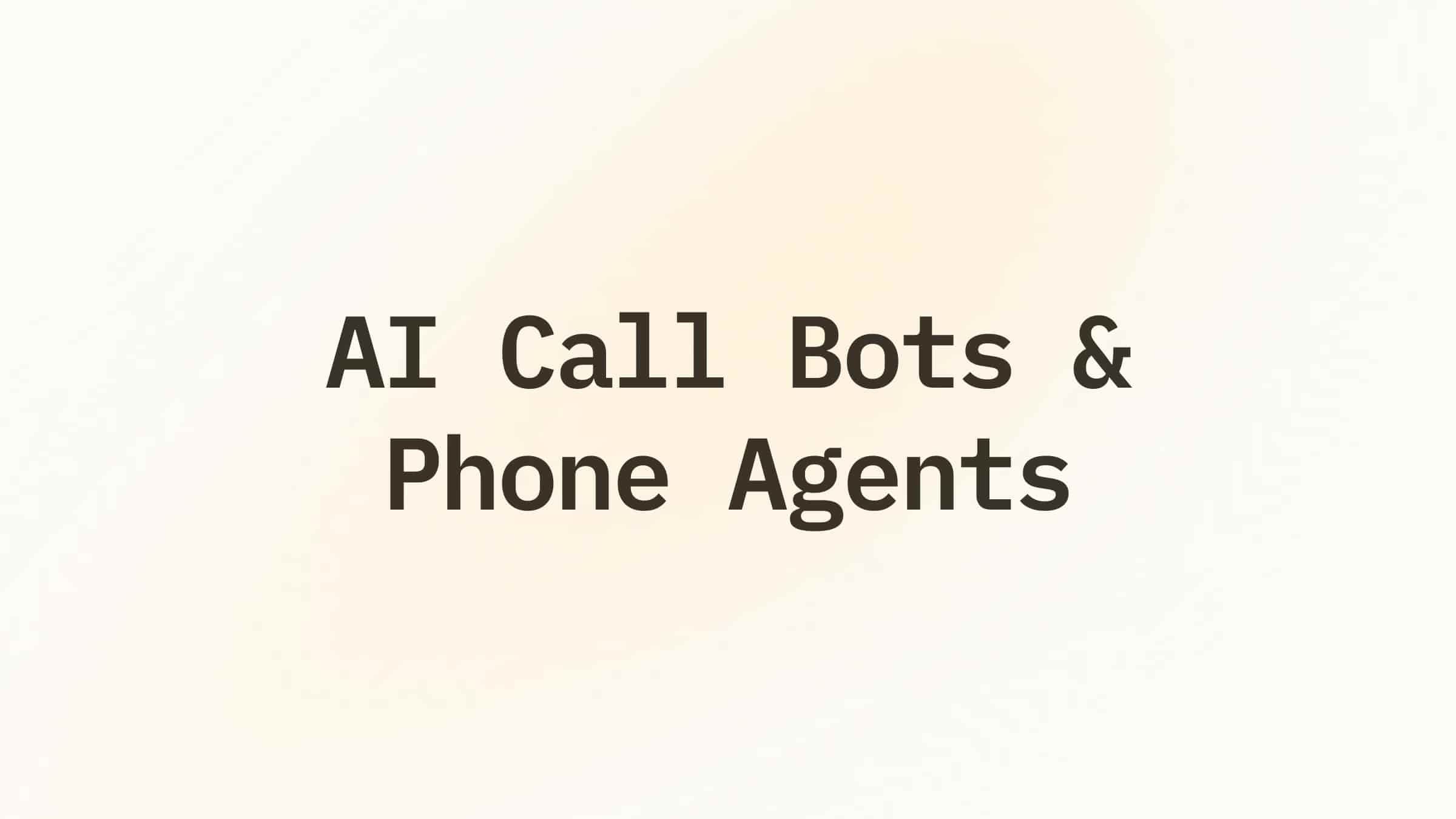
.png)
.png)